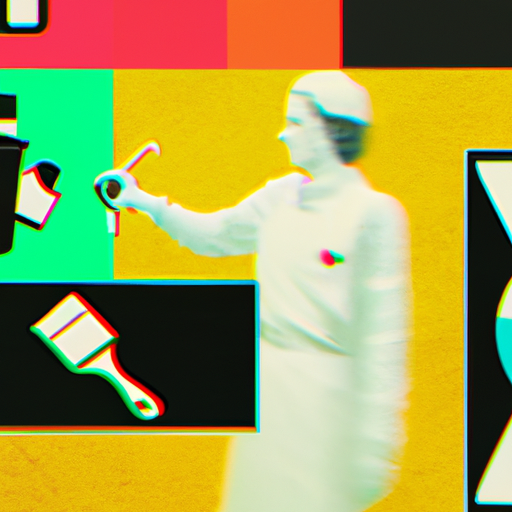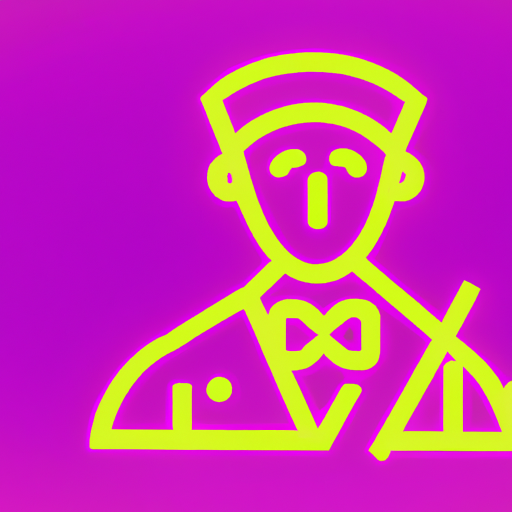
-
Table of Contents
- Crafting Custom Icons for User Interfaces
- The Importance of Custom Icons
- The Process of Creating Custom Icons
- 1. Research and Planning
- 2. Sketching and Wireframing
- 3. Digital Design
- 4. Testing and Iteration
- 5. Implementation
- The Benefits of Custom Icons
- 1. Improved User Engagement
- 2. Enhanced Brand Perception
- 3. Clear Communication
- 4. Scalability and Adaptability
- 5. Differentiation from Competitors
- Case Studies: Custom Icons in Action
- 1. Slack
- 2. Airbnb
- Conclusion
Crafting Custom Icons for User Interfaces

Icons play a crucial role in user interfaces, serving as visual cues that help users navigate and interact with digital products. While there are countless pre-designed icons available, crafting custom icons can elevate the user experience and make a product stand out from the crowd. In this article, we will explore the importance of custom icons, the process of creating them, and the benefits they bring to user interfaces.
The Importance of Custom Icons
Icons are a universal language that transcends cultural and language barriers. They provide a visual representation of actions, objects, and concepts, making it easier for users to understand and interact with a digital interface. Custom icons offer several advantages over generic ones:
- Brand Consistency: Custom icons can be designed to align with a brand’s visual identity, ensuring a consistent and cohesive user experience across all touchpoints.
- Enhanced Usability: Custom icons can be tailored to match the specific needs and preferences of the target audience, resulting in a more intuitive and user-friendly interface.
- Unique Identity: Custom icons set a product apart from competitors, making it instantly recognizable and memorable.
The Process of Creating Custom Icons
Creating custom icons requires a thoughtful and iterative design process. Here are the key steps involved:
1. Research and Planning
Before diving into the design process, it is essential to conduct thorough research to understand the target audience, the product’s context, and the desired user experience. This research will inform the design decisions and ensure that the icons effectively communicate with the users.
2. Sketching and Wireframing
Once the research is complete, designers can start sketching and wireframing the icons. This initial phase allows for exploration and ideation, enabling designers to experiment with different shapes, styles, and metaphors. Sketching also helps in quickly iterating and refining ideas before moving to the digital design phase.
3. Digital Design
After finalizing the sketches, designers can move to the digital design phase. Using vector-based design software like Adobe Illustrator or Sketch, designers can create scalable and pixel-perfect icons. It is crucial to pay attention to details such as line weights, proportions, and consistency to ensure the icons look polished and professional.
4. Testing and Iteration
Once the icons are designed, it is essential to test them in the context of the user interface. This testing phase helps identify any usability issues or inconsistencies that may have been overlooked during the design process. Feedback from users and stakeholders can be invaluable in refining the icons and making necessary iterations.
5. Implementation
After the icons have been tested and refined, they are ready for implementation. Designers need to work closely with developers to ensure that the icons are correctly integrated into the user interface. This collaboration is crucial to maintain the visual integrity of the icons and ensure they are displayed consistently across different devices and platforms.
The Benefits of Custom Icons
Custom icons offer numerous benefits that contribute to an enhanced user experience and a more successful product. Let’s explore some of these benefits:
1. Improved User Engagement
Custom icons can capture users’ attention and create a sense of delight and engagement. When users encounter unique and visually appealing icons, they are more likely to explore and interact with the interface, leading to increased user engagement and satisfaction.
2. Enhanced Brand Perception
Custom icons that align with a brand’s visual identity can reinforce brand perception and create a sense of professionalism and trust. Consistent branding across all touchpoints, including icons, helps build brand recognition and loyalty.
3. Clear Communication
Well-designed custom icons can effectively communicate actions and concepts, reducing the cognitive load on users. By using familiar metaphors and intuitive designs, custom icons can make complex tasks and features more accessible and understandable.
4. Scalability and Adaptability
Custom icons are created as vector graphics, allowing them to be scaled up or down without losing quality. This scalability ensures that icons look crisp and clear on different screen sizes and resolutions, providing a consistent experience across devices.
5. Differentiation from Competitors
Custom icons give a product a unique identity and help it stand out from competitors. In a crowded marketplace, having distinctive icons can make a significant difference in attracting and retaining users.
Case Studies: Custom Icons in Action
Let’s take a look at two case studies that demonstrate the impact of custom icons on user interfaces:
1. Slack
Slack, a popular team communication platform, uses custom icons to enhance its user experience. The platform’s icons are designed with a consistent style, featuring rounded shapes and vibrant colors. These custom icons not only align with Slack’s brand identity but also contribute to a friendly and approachable user interface. The use of custom icons in Slack’s interface has been praised for its clarity and ease of use.
2. Airbnb
Airbnb, a leading online marketplace for accommodations, utilizes custom icons to guide users through its booking process. The icons are designed with simplicity and clarity in mind, using recognizable metaphors to represent actions such as searching, booking, and reviewing. These custom icons contribute to Airbnb’s user-friendly interface and help users navigate the platform effortlessly.
Conclusion
Custom icons are a powerful tool in crafting exceptional user interfaces. They offer numerous benefits, including brand consistency, enhanced usability, and a unique identity. By following a well-defined design process and considering the needs of the target audience, designers can create custom icons that elevate the user experience and set a product apart from competitors. With the right combination of research, planning, and iteration, custom icons can make a significant impact on the success of a digital product.
